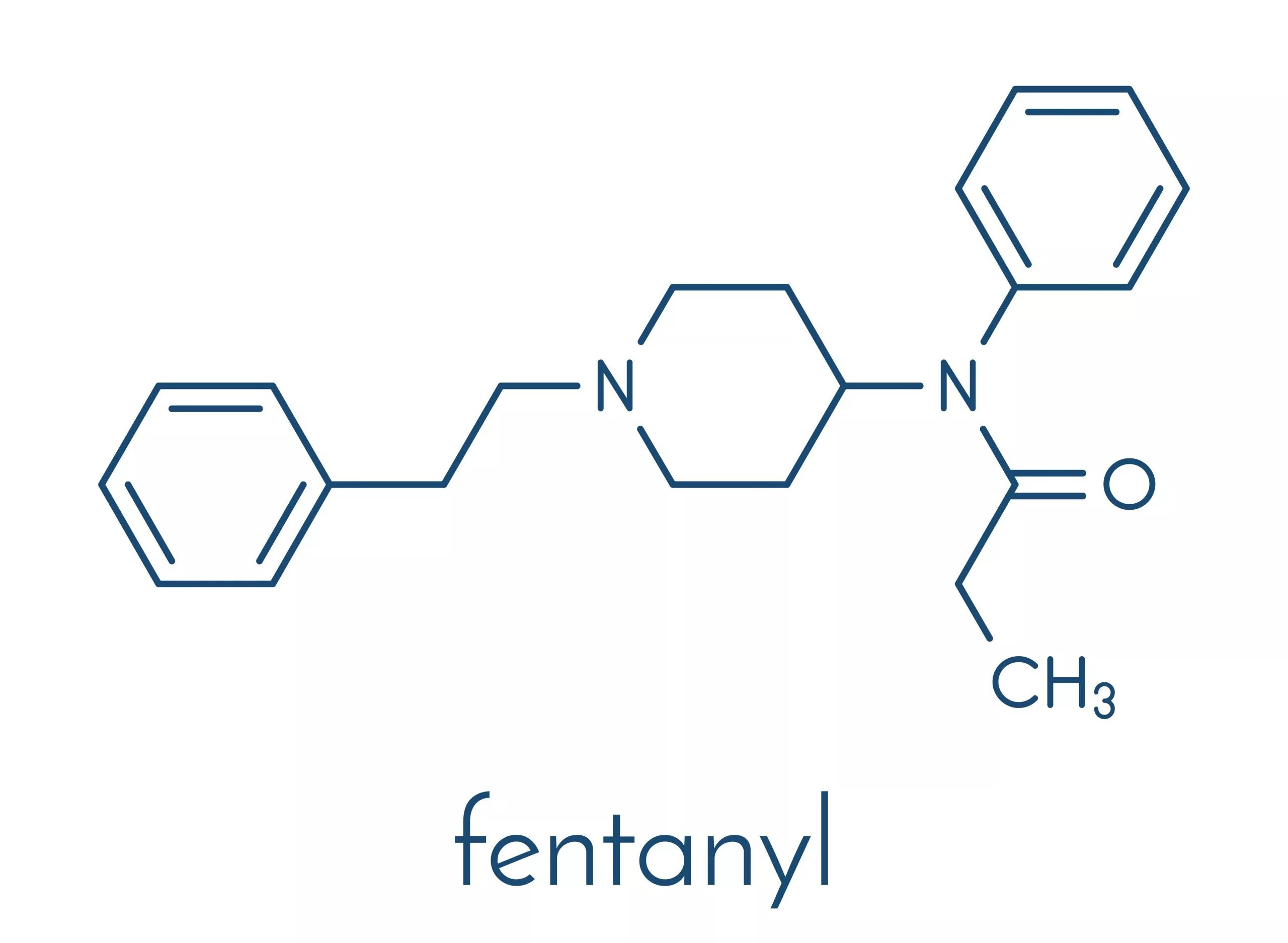Fentanyl will mostly leave your body within 72 hours, but it can be detected in your system for up to three months. The amount of time it takes for fentanyl to fully leave the system varies for each person, with three months (90 days) being the average.
Many wonder about how long fentanyl stays in your system, because they worry about illegal fentanyl use being detected via a drug test. Join Avenues Recovery, experts in addiction treatment, as we explore what fentanyl is and how long it stays in your system.
What is Fentanyl?
Fentanyl is a powerful painkiller, between 50 and 100 times more effective than morphine. It is often given to patients post-surgery but has become increasingly popular as a recreational drug, despite being illegal due to its addictive properties and high overdose risk.
How Does Fentanyl Work?
Fentanyl is a synthetic opioid that blocks pain signals, increases dopamine levels in the brain, and causes profound feelings of euphoria and relaxation. These feelings are what make fentanyl so addictive. The lethal dose of fentanyl can be tiny, causing many tragedies.
Half-life of Fentanyl: How Long Does Fentanyl Last?
The best way to calculate how long fentanyl stays in your system is by determining its half-life.
Elimination half-life refers to how long it will take for half of a single drug dose to be eliminated from the body. This includes fentanyl and other opiate pain relievers.
The exact half-life of fentanyl is going to vary based on the method by which it is administered. When a patient takes fentanyl intravenously, its half-life will be between two to four hours. This results in it taking between 11 to 22 hours before all traces of the medication are out of his system. If one takes more fentanyl in that time, then the half-life will restart.
Half-Life Of Fentanyl Patch and Fentanyl Lozenges
Fentanyl is also available in a lozenge or a patch. This method takes longer to leave the system because it releases very slowly into the body. It is estimated that the half-life of this type of fentanyl will be between 7 to 17 hours. This translates into 36 hours before the drug leaves your system completely.
While the actual substance may be out of your system within this time, patients who take fentanyl should be aware that fentanyl will leave behind small traces known as metabolites. These metabolites linger in the body far past the half-life. One of these metabolites is called Norfentanyl, and people often wonder how long Norfentanyl stays in the system. While a simple drug test will not detect these metabolites, a thorough drug test may pick up these fentanyl traces even several days later.
Does Fentanyl Show Up In a Drug Test?
While fentanyl is a strong opiate, it is not often tested for on a standard drug test. Standard drug tests are meant to detect common opioids that will metabolize and turn into morphine. Since fentanyl does not metabolize into morphine, it is unlikely to show up unless an advanced drug test is ordered.
However, it is always wise to be prepared for an advanced drug test in the event it is ordered. There is no last-minute solution when you’re wondering how to get fentanyl out of your system. Knowing the illegal fentanyl drug timeline will help you prepare yourself accordingly.
Fentanyl can be detected in the urine, hair, and blood for hours and even days after the final use.
If you have been given fentanyl after surgery at any time within the past few months and will undergo a drug test, be sure to disclose this information so that any detection of fentanyl is not held against you.

How Long Does Fentanyl Stay In Urine?
Fentanyl can be detected in urine for 24 to 72 hours and can easily be detected via an advanced urine drug test. If it has been more than 72 hours since one took fentanyl, it will not show up in an advanced urine test, and it may be flushed out of the system as soon as 24 hours after taking Fentanyl.
However, even after the body has metabolized the Fentanyl completely, the metabolite Norfentanyl may still be detectable up to 48 to 96 hours after administration of the initial dose of Fentanyl.
How long fentanyl stays in your urine can be affected by long-term use. Chronic fentanyl users may have fentanyl stored in their fat, which can greatly extend the time period in which the drug can be detected in a urinalysis. In consistent users, fentanyl may be detected for up to 7 days, and norfentanyl may be detected for up to 13 days. There have even been reports of norfentanyl being detected for as long as 26 days after the final dose of fentanyl was administered.
How Long Does Fentanyl Stay in Your Blood?
Fentanyl lasts in the blood for up to 12 hours only, causing blood tests to be a highly ineffective method. Other organs in the body will absorb the substance, which means that fentanyl can still be in the body without being in the blood. An individual will need to have taken the substance right before the drug test for it to show up in the blood.
How Long Does Fentanyl Stay in Your Hair?
It is possible to detect fentanyl in the hair for about three months after last use. A post-op patient who was given fentanyl may have the drug show up in the hair up to three months later.
An advanced hair drug test may be one of the most effective and accurate methods of determining whether an individual has used fentanyl in the last few months. Since hair grows relatively slowly, it will provide an accurate health history timeline that cannot be gained via any other method. However, it is difficult to calculate exactly how long ago the fentanyl was used. Unless it shows up in the hair follicles in vast amounts, it may not be basis enough to prove that the patient has recently used it.
How Long Does Fentanyl Stay in Saliva?
Neither fentanyl nor its metabolites can be detected consistently in saliva, and it is therefore not considered a viable testing method.
Fentanyl Half-Life Chart
|
Fentanyl Half-Life |
Casual User |
Long Term User |
|
Fentanyl in Urine |
24 - 72 Hours |
7 - 19 Days |
|
Norfentanyl in Urine |
48 - 96 Hours |
7 - 26 Days |
|
Fentanyl in Blood |
12 Hours |
12 Hours |
|
Fentanyl in Hair |
Up to 90 Days |
Up to 90 Days |
|
Fentanyl in Saliva |
Not viable |
Not viable |
What Influences the Half-Life of Fentanyl?
The half-life of fentanyl in your body, and therefore the exact amount of time it takes to be flushed from the body, will depend on several factors that vary from individual to individual. Three large factors are weight, height, and body mass. The heavier or taller the individual, the less likely it is that the fentanyl will show up. Age plays a significant role as well since younger people are better able to metabolize any substance as compared to seniors.
Another factor would be genetics. Some find that they can metabolize substances faster than others, while some find that substances stay in their body longer. Things like hepatic function, food intake at the time of drug use, and metabolic rate, will all influence the speed at which one can get fentanyl out of the system.
Other factors that influence fentanyl’s half-life include:
- Urinary pH of the individual
- Drug dosage
- Method of drug administration
- Frequency of use
- Length of use
- Simultaneous use of other drugs
How Long Does Fentanyl Withdrawal Last?
Understanding how long fentanyl stays in your system may give an idea of the fentanyl withdrawal timeline. A withdrawal can be both lengthy and painful; one may experience dizziness, confusion, sleepiness, weakness, and even coma and unconsciousness if they are used for a long time. Withdrawal is best done under professional medical supervision, in a safe and controlled environment such as a drug detox center.
.png?width=1000&height=667&name=rainbow%20fentanyl%20(1).png)
Fentanyl stays in the system over 11 to 22 hours when administered intravenously, and up to 72 hours when taken as a lozenge or transdermal patch. Withdrawal symptoms usually will not turn severe until after this time. As the body begins to sense the absence of the substance and must function without it, withdrawal symptoms may turn severe. One should expect another three to five days of detox-related discomfort before they begin to feel better. The substance may already be out of their system, but the body has to learn how to function again without the addictive substance.
Avenues Recovery Can Help You Get Fentanyl Out Of Your System
Choosing the path to recovery from fentanyl addiction is a brave decision. For effective treatment, consider an inpatient drug rehab like Avenues Recovery. Reach out today and let our experienced professionals guide you towards a brighter, drug-free future. Don't hesitate—take the first step toward recovery and rediscover life's possibilities.



